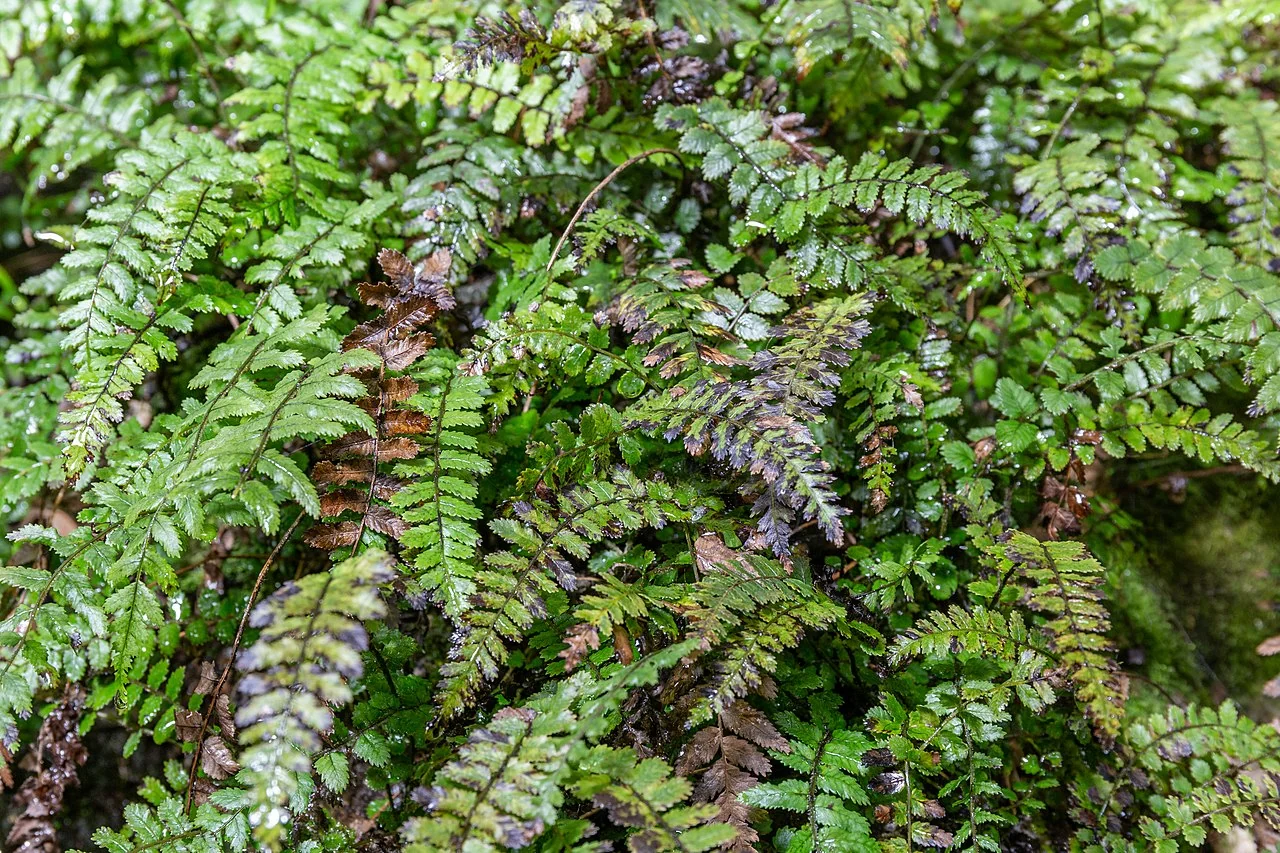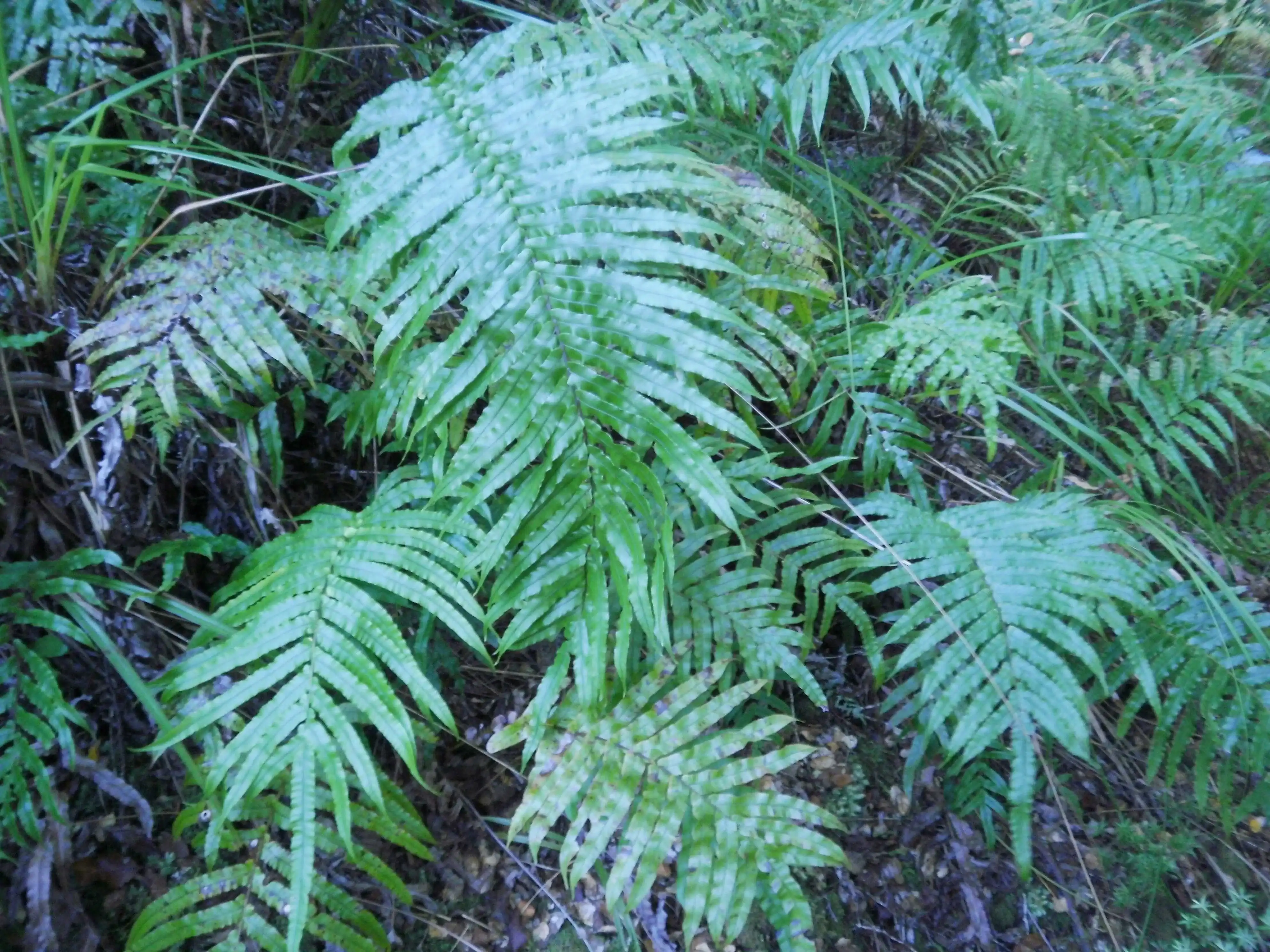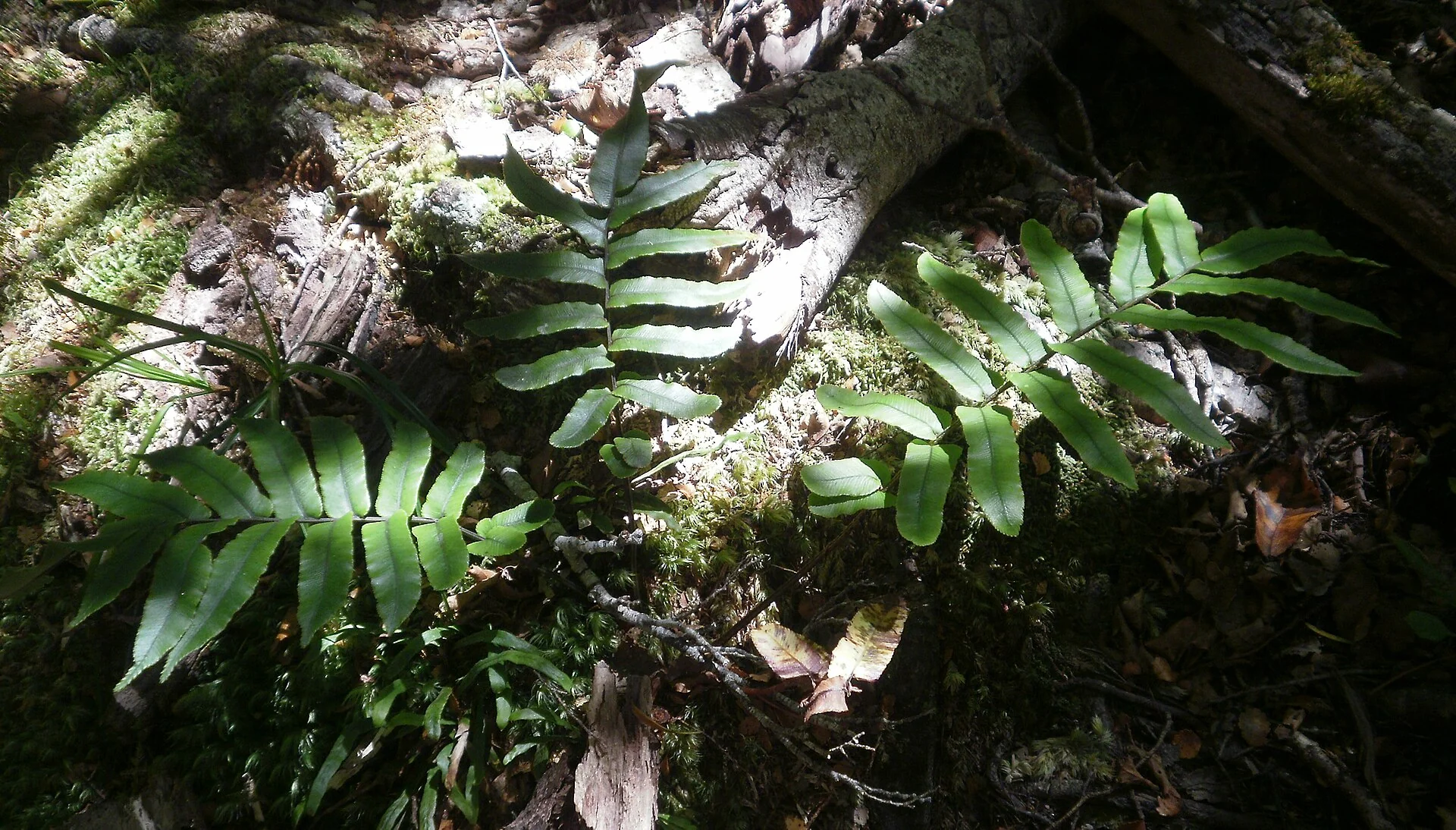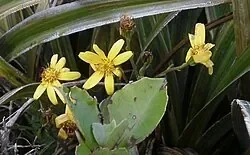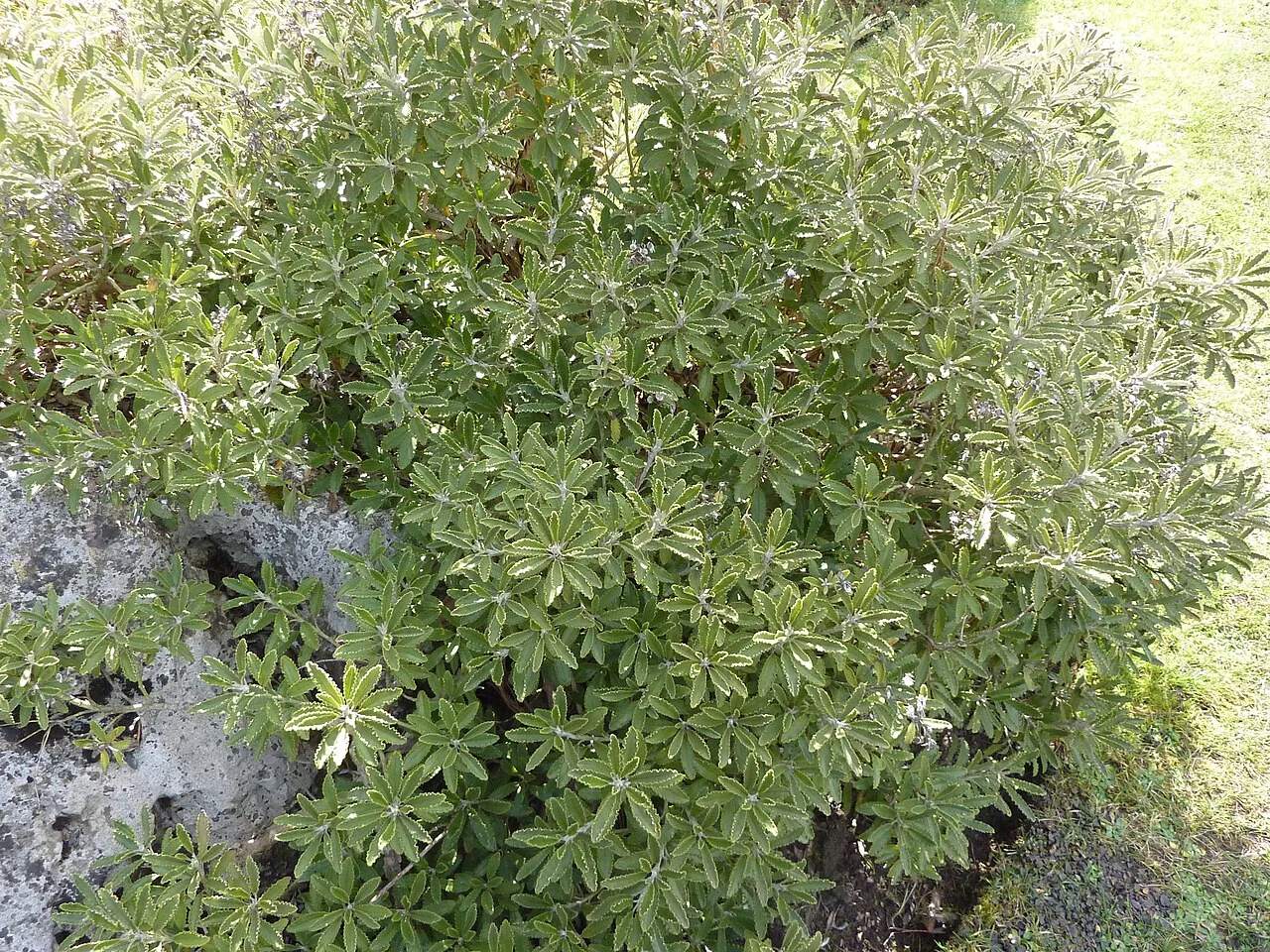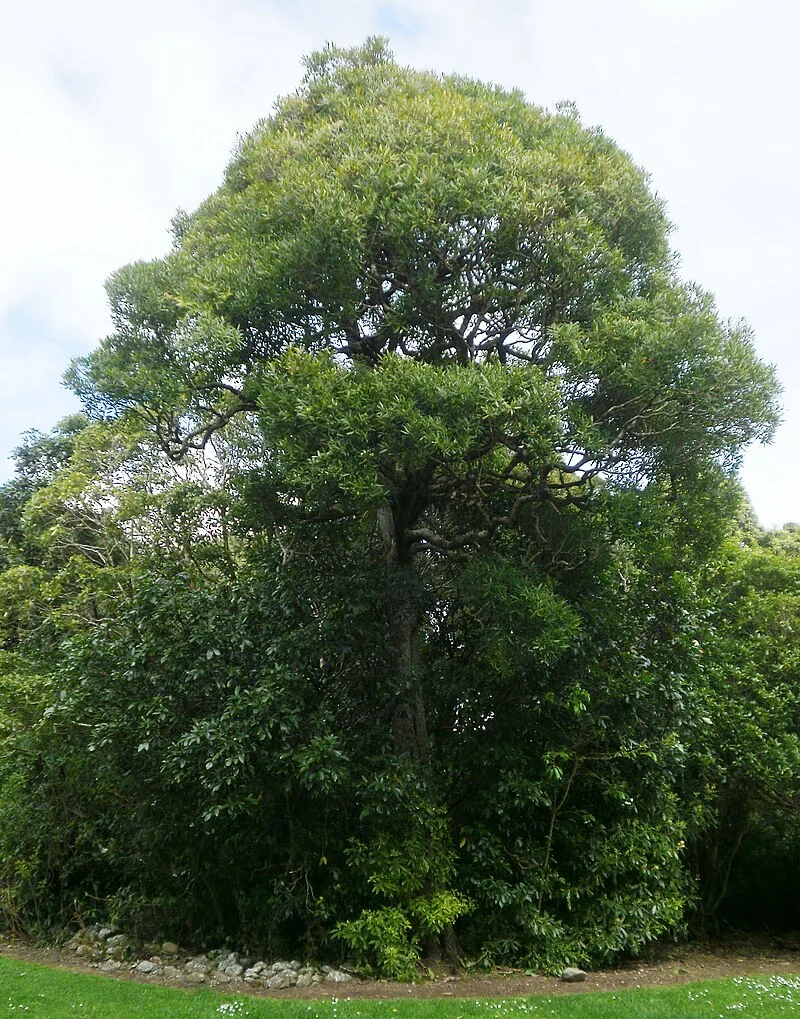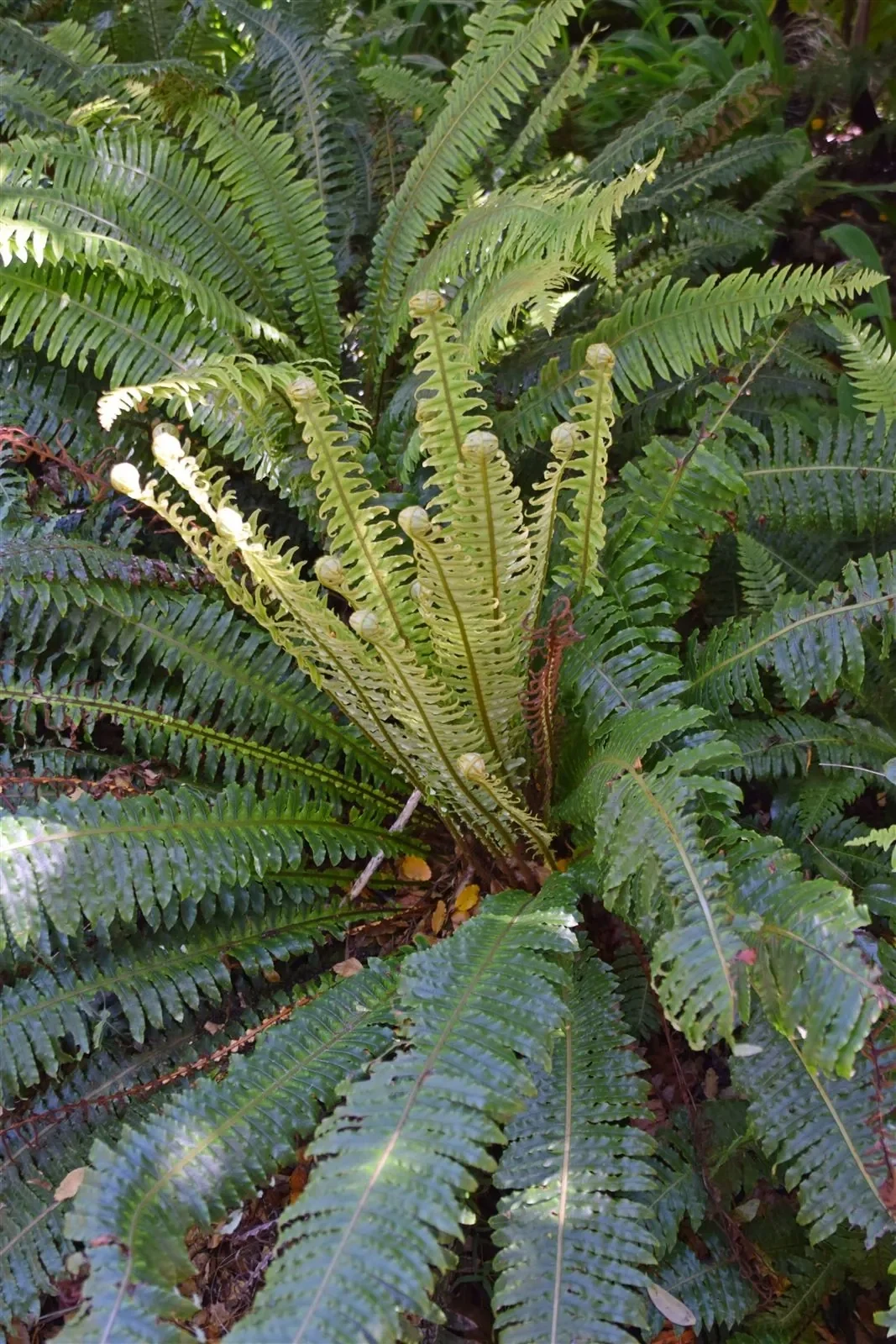
Crown Fern
Blechnum discolor
Introduction
Overview
Crown Fern ( Blechnum discolor ) is a common and attractive ground fern in New Zealand forests , forming dense colonies with its arching fronds. It is valued for its role in forest ecology and as a garden plant. Learn more about New Zealand ferns

Plant Description
Botanical Features
Crown Fern ( Blechnum discolor ) is a distinctive native plant with unique botanical characteristics that make it well-suited to New Zealand's diverse environments. This species exhibits typical features of its genus and family, with specialized adaptations that allow it to thrive in its natural habitat. The plant 's morphological features, including its leaf structure, growth habit, and reproductive characteristics, reflect millions of years of evolution in New Zealand's isolated environment. Understanding the botanical description of Crown Fern helps gardeners appreciate its unique characteristics and provides insight into its cultivation requirements and ecological role.
Quick Facts
| Scientific Name | Blechnum discolor |
|---|---|
| Height | 0.51.5 m (fronds) |
| Spread | Forms dense colonies, up to several meters across |
| Water Needs | High; prefers consistently moist soil |
| Light | Deep to dappled shade (tolerates some morning sun) |
| Frost Tolerance | Moderate (tolerates light frost, protect from severe frost) |
| Salt Tolerance | Low (not tolerant of coastal salt) |
| Growth Rate | Moderate |
| Lifespan | Perennial (long-lived, colonies can persist for decades) |
Crown Fern is native to the forests of New Zealand, where it thrives in cool, moist, shaded environments. It is found throughout the country in suitable habitats, particularly in damp gullies and forest understories. It prefers areas with consistent moisture and protection from direct sunlight and drying winds.
Regional Suitability
| City | Climate Suitability |
|---|---|
| Whangārei | Ideal |
| Auckland | Ideal |
| Hamilton | Ideal |
| Tauranga | Ideal |
| Rotorua | Ideal |
| Gisborne | Ideal |
| New Plymouth | Ideal |
| Napier | Ideal |
| Whanganui | Ideal |
| Palmerston North | Ideal |
| Wellington | Ideal |
| Nelson | Ideal |
| Christchurch | Ideal |
| Dunedin | Ideal |
| Invercargill | Ideal |
Plant Habitat
Natural Range
Occurs from lowland to montane forests throughout New Zealand, especially in sheltered gullies, along shaded stream margins, and under podocarpbroadleaf canopies. It favors continuously moist, humusrich soils and high humidity, often forming extensive colonies beneath protective tree cover.
Plant Conservation
Threats and Efforts
Crown Fern (Blechnum discolor) is a native New Zealand fern with a national conservation status of "Not Threatened." This classification reflects its widespread distribution and adaptability across diverse forest habitats throughout New Zealand, where it commonly forms extensive colonies in suitable understory environments.
Despite its secure national status, crown fern faces ongoing conservation challenges that require continued habitat protection and management. The primary threats include habitat loss and fragmentation through deforestation, land conversion for agriculture and urban development, which reduces the continuous forest areas necessary for maintaining healthy fern populations. Changes to forest composition, particularly the loss of canopy cover that provides the dappled light conditions crown fern requires, can significantly impact local populations. Invasive plant species competition, soil disturbance from recreational activities, and edge effects in fragmented forests also pose challenges to natural regeneration and colony establishment. Its role as habitat for native wildlife, including the critically endangered kÂkÂp which uses crown fern fronds for shelter, makes its conservation important for supporting broader ecosystem health and endangered species recovery. Conservation efforts focus on protecting intact forest ecosystems, controlling invasive species, maintaining appropriate forest management practices that preserve understory diversity, and supporting restoration projects that include native fern species. By supporting native forest protection, sustainable land management practices, and public education about the importance of understory species diversity, we can help ensure the continued survival of this culturally and ecologically significant native fern.
Soil Requirements
Crown Fern performs best in the following soil conditions:
- Rich, humus-filled soil
- Good moisture retention
- Well-draining but consistently damp
- Slightly acidic to neutral pH (5.5-7.0)
- Benefits from added leaf mold or composted pine needles
- Tolerates poor soils if moisture is adequate
Light Requirements
This fern prefers shaded conditions:
- Deep to dappled shade
- Protection from direct sunlight, especially midday sun
- Morning sun tolerated in cooler regions
- Ideal under canopy of trees or larger shrubs
- Can tolerate more light if soil remains consistently moist
- Avoid hot , exposed sites
Water Requirements
Consistent moisture is key for Crown Fern:
- Regular watering to maintain even soil moisture
- Never allow soil to dry out completely
- Reduce frequency in winter but don't let soil dry out
- Benefits from misting in dry conditions
- Mulch to help retain soil moisture
- Good drainage to prevent waterlogging
Temperature Tolerance
Crown Fern has the following temperature preferences:
- Prefers cool to moderate temperatures
- Ideal growing range: 10-24C (50-75F)
- Can tolerate light frosts once established
- Protect from severe frost in colder regions
- Dislikes hot , dry conditions
- Provide extra humidity during hot periods
Crown Fern's ecological significance is evident in its role as a key understory species. Its presence indicates a healthy forest ecosystem, and its growth requirements reflect its ecological significance in maintaining forest moisture levels and providing habitat for small forest creatures.
Planting Guide
Crown Fern ( Blechnum discolor ) thrives in shaded, moist environments with well-draining, humus-rich soil. Plant with the crown just above soil level and water regularly, especially during dry spells. Mulch to retain moisture and suppress weeds. Avoid direct sunlight, which can scorch the fronds. Ideal for underplanting in native gardens and forest settings.
Ecological Role
Environmental Value
Dense stands of Crown fern trap leaf litter and conserve moisture, stabilizing soil on shaded slopes and stream margins. The layered fronds create refuges for insects and forest skinks, while the humid microclimate beneath crowns supports mosses, liverworts, and the germination of shadetolerant seedlings. In restoration , it is used to rebuild understory structure.
Uses & Significance
Blechnum discolor, commonly known as Crown Fern, is a significant native fern of New Zealand with various ecological, traditional, and horticultural uses.
Ecological Significance:
- Understory Species: It is a key understory species, indicating a healthy forest ecosystem.
- Soil Stabilization and Moisture Retention: Dense stands of Crown Fern trap leaf litter and conserve moisture, which helps stabilize soil on shaded slopes and stream margins.
- Habitat Provision: The layered fronds create refuges for insects and forest skinks.
- Microclimate Creation: The humid microclimate beneath its crowns supports mosses, liverworts, and the germination of shade-tolerant seedlings.
- Restoration: It is utilized in restoration efforts to rebuild understory structure.
- Colony Formation: The fern spreads by stolons, forming extensive colonies on the forest floor.
Traditional Uses (Māori):
- Medicine: Blechnum discolor has been used in traditional Māori medicine. More broadly, species within the Blechnum genus have been used to treat various ailments, including intestinal wounds, pulmonary complaints, skin disorders, and urinary bladder infections.
- Navigation: The bent-over fronds were historically used as track-markers, as their pale undersides are visible even at night.
- Spiritual and Cultural: To some Māori, ferns like huruhuru whenua (a Māori name that can refer to Crown Fern) were sacred and used in spiritual rituals. Māori also placed fronds over the stumps of felled trees to placate Tāne, the god of the forest.
- Food: The young shoots, known as koru, were eaten as a green vegetable.
Horticultural Uses:
- Ground Cover: It is valued as an attractive ground cover, particularly in dappled shade.
- Garden Plant: Crown Fern is a popular choice for native, woodland, and rainforest-style gardens, thriving as understorey planting or massed in shaded borders to create a lush, layered effect.
- Container Planting: It can also be grown in containers.
- Low Maintenance: The plant generally requires minimal maintenance.
Landscaping Section
Design Uses
Use Crown fern to carpet shaded borders, under plantings of kāmahi or kohekohe, or to edge forest paths where regular moisture is available. Combine with native groundcovers such as Pratia angulata or with taller tree ferns for layered texture. Its tidy , repeating form gives rhythm and cohesion in naturalistic designs.
Spring
Divide clumps and refresh mulch.
Summer
Water during dry spells; provide shade if needed.
Autumn
Remove old fronds and tidy up plants.
Winter
Minimal care needed; protect from severe frost.
Pruning & Maintenance
Techniques and Timing
Crown Fern ( Blechnum discolor ) requires minimal pruning. Remove dead or damaged fronds at the base to maintain a tidy appearance and encourage healthy new growth. Pruning is best done in late winter or early spring before new fronds emerge. Avoid cutting into the crown of the plant.
How to Grow Crown Fern
From Spores
Propagating Crown Fern from spores is the natural reproductive method that allows you to understand the fascinating life cycle of ferns. This method requires patience and attention to sterile conditions but offers the satisfaction of growing plants from their most basic reproductive stage. Spore propagation is ideal for creating large numbers of plants and experiencing the complete fern life cycle. The process involves two distinct phases: gametophyte and sporophyte development. Success rates improve significantly with practice and proper environmental control.
- Collect fertile fronds when spore cases (sori) turn brown, typically in late summer to early autumn
- Place fronds on clean paper in a warm, dry place and allow spores to release naturally over 1-2 days
- Prepare sterile growing medium using equal parts fine peat and perlite, sterilized with boiling water
- Sow spores thinly on the surface of cooled, moist growing medium in covered containers
- Maintain high humidity (80-90%) and consistent temperature of 18-22°C in bright, indirect light
- After 6-8 weeks, tiny green prothalli (gametophytes) will appear on the soil surface
- Continue misting to maintain moisture as prothalli develop and sexual reproduction occurs
- Small fern sporophytes will emerge after 3-6 months and can be transplanted when 2-3 cm tall
Spore-grown plants typically reach transplantable size within 12-18 months under optimal conditions.
From Division
Division is the most reliable and straightforward method for propagating Crown Fern, making it the preferred choice for home gardeners. This method takes advantage of the fern's natural clumping growth habit and well-developed stolon system. Division produces mature plants much faster than spore propagation and maintains identical characteristics to the parent plant. The technique works particularly well with Crown Fern because it naturally forms dense colonies through underground stolons. This method also helps rejuvenate older clumps that may have become overcrowded or declined in vigor over time.
- Choose healthy, established plants in early spring before new growth begins or in autumn after growth slows
- Water the plant thoroughly 24 hours before division to ensure the root system is well-hydrated
- Carefully dig around the entire plant to expose the stolon system and root network
- Use a sharp, sterile knife or spade to separate the crown into sections with 3-5 fronds each
- Ensure each division has a good portion of roots and at least one growing point
- Trim any damaged or excessively long roots and remove old or damaged fronds
- Plant divisions immediately at the same depth as the original plant in prepared, humus-rich soil
- Water thoroughly and maintain consistent moisture during the 6-8 week establishment period
- Provide shade and wind protection until new growth indicates successful establishment
Divided plants typically establish within 6-8 weeks and reach mature size within 1-2 growing seasons.
From Stolon Cuttings
Crown Fern naturally spreads through underground stolons, making stolon cutting an effective propagation method. This technique allows you to create new plants without disturbing the main crown while taking advantage of the fern's natural spreading mechanism. Stolon cuttings are particularly useful for expanding plantings or sharing plants with other gardeners. The method works best during the active growing season when stolons are most vigorous and likely to establish successfully.
- Locate healthy stolons extending from the main plant during the growing season
- Trace stolons to find sections with visible nodes or small plantlets developing
- Cut 10-15 cm sections of stolon ensuring each piece has at least one node or small plantlet
- Plant stolon sections horizontally in pots filled with moisture-retentive, well-draining potting mix
- Cover lightly with 1-2 cm of soil, leaving any emerging fronds exposed
- Keep soil consistently moist and place in a shaded, protected environment
- New growth should appear within 4-6 weeks if conditions are suitable
- Allow to establish for 3-4 months before transplanting to permanent locations
Pests and Diseases
Common Pests
Blechnum is generally resistant to most pests due to its native adaptations. However, it may occasionally be affected by common garden pests such as aphids or scale insects.
Disease Prevention
To prevent diseases, ensure good air circulation around Blechnum and avoid overwatering. Remove any diseased plant material promptly to prevent spread.
Cultural Significance
Crown Fern (Blechnum discolor) was used by Māori for various purposes. The starchy rhizome was cooked and eaten, and the fronds were used for weaving and thatching.
Bonus Tip
When watering your Crown Fern, it's a good idea to water directly onto the crown of the plant. This ensures that the water penetrates the dense root ball, which can sometimes dry out even when the surrounding soil is moist. This technique mimics the natural rainfall that the fern would receive in its forest habitat and helps to keep the plant healthy and hydrated.
